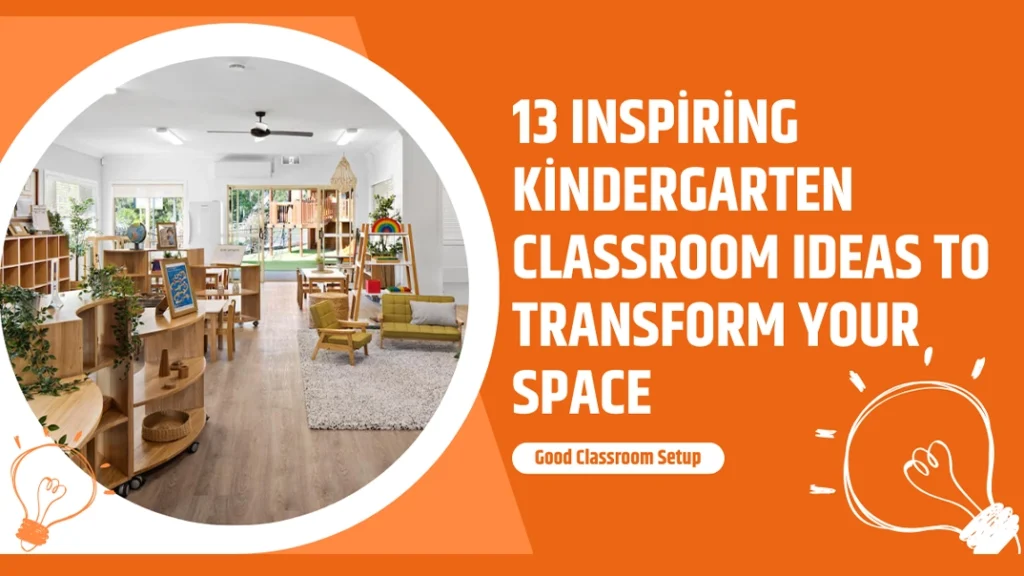Is your kindergarten classroom in need of a makeover? Are you looking for fresh ideas to create an engaging and inspiring environment for your students? Transforming your classroom can boost children’s creativity, motivation, and overall learning experience. A well-designed classroom is visually appealing, functional, and conducive to learning. From flexible seating to interactive walls, countless kindergarten classroom ideas can help you create a dynamic and nurturing space for your children.
Creating an inspiring kindergarten classroom is essential for fostering a love of learning in children. It’s crucial to design a space that supports both the educational curriculum and the emotional well-being of the students. By incorporating innovative classroom ideas, you can create an environment that encourages curiosity, exploration, and collaboration. Elements such as colorful decor, interactive learning stations, and comfortable seating arrangements can significantly enhance the learning experience for children.
One of the critical kindergarten classroom ideas is to establish a layout that accommodates different learning styles and activities. For instance, designated reading, art, and sensory play areas can help children focus and enjoy their activities more. Additionally, incorporating natural elements such as plants and natural light can create a calming atmosphere that enhances concentration and reduces stress.
Another crucial aspect is to ensure that the classroom is organized and clutter-free. Storage solutions like cubbies, bins, and shelves can help keep the space tidy and materials easily accessible. An organized classroom looks appealing and makes it easier for students to find and use resources independently. Furthermore, it’s essential to integrate technology thoughtfully, ensuring that digital tools enhance learning without overwhelming the students.
A classroom that celebrates diversity and inclusion is also vital. Incorporating multicultural books, music, and decor can help children appreciate different cultures and foster a sense of belonging among all students. Moreover, creating a welcoming environment by displaying student artwork and using inclusive language can significantly impact the children’s self-esteem and sense of community.
In this article, I will share 13 inspiring ideas to help you revamp your kindergarten classroom. These ideas focus on functionality, creativity, and fostering a positive learning environment. Let’s dive in!
Keep reading to discover how to transform your classroom into a vibrant and stimulating space for your children.
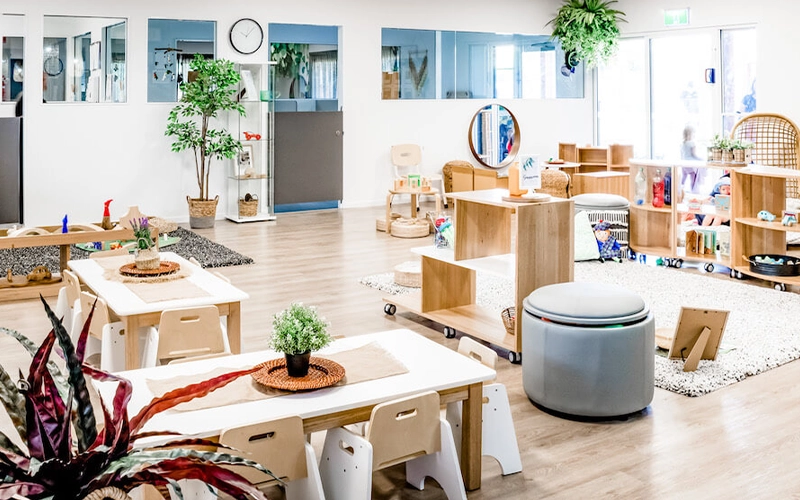
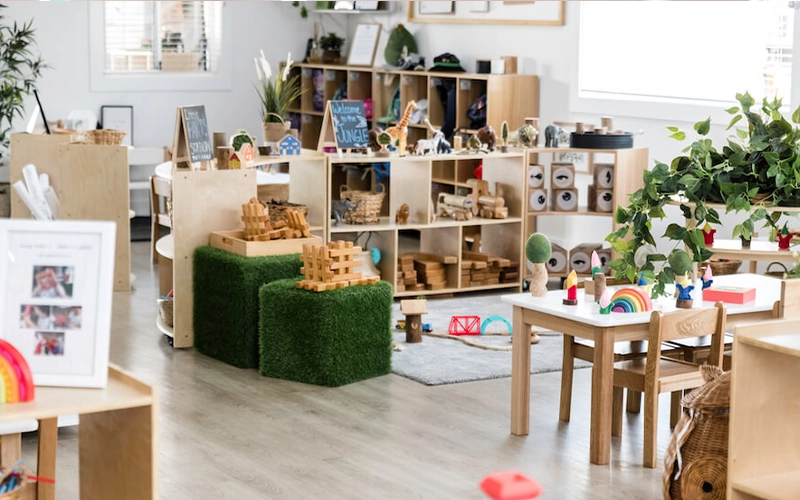
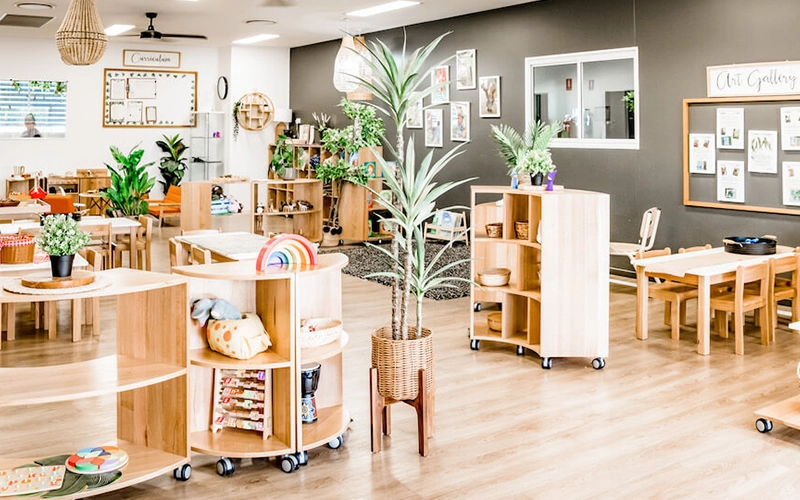
Top 13 Kindergarten Classroom Ideas
Are you looking to revamp your kindergarten classroom with fresh, engaging ideas? A well-designed classroom can significantly enhance children’s learning experiences by creating a functional and inspiring environment. Here are 13 inspiring kindergarten classroom ideas to transform your space and boost your students’ creativity and motivation. From vibrant color schemes to innovative furniture choices, these ideas are designed to create a dynamic and nurturing environment for young learners.
Creating an inspiring kindergarten classroom is essential for fostering a love of learning in children. It’s crucial to design a space that supports both the educational curriculum and the emotional well-being of the students. By incorporating innovative classroom ideas, you can create an environment that encourages curiosity, exploration, and collaboration. Elements such as colorful decor, interactive learning stations, and comfortable seating arrangements can significantly enhance the learning experience for young students.
In the following sections, we will delve into specific ideas covering essential aspects of classroom design, from color matching and safety considerations to creating a nature-inspired environment. Each idea aims to make the classroom more engaging and supportive for young children, ensuring they have the best possible start to their educational journey. Let’s dive in and discover how you can transform your kindergarten classroom into a vibrant and stimulating space for your children.
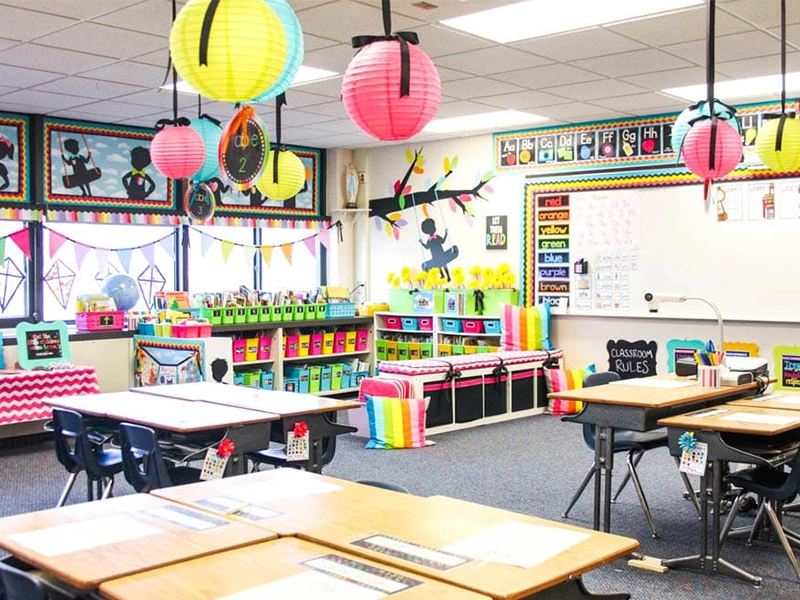
1. Color Matching is Very Important
Color plays a significant role in making a classroom exciting and welcoming. Choosing the right colors can change how kids feel and behave. Bright colors like red, blue, and yellow can make the room lively and fun, while softer colors like light blue or green can create a calm and relaxing space. Using a mix of colors is essential to keep the classroom balanced. Try using different colors to highlight areas, like a blue reading corner or a green play area. This helps children understand what each space is for and makes the room look organized and inviting.
2. The Design Theme is Critical
Having a theme for your classroom can make it more exciting and more accessible to decorate. Themes can be anything from jungle adventures to outer space. A well-chosen theme can make learning more fun for children. For example, a jungle theme could include green walls, stuffed animals, and plants to create an adventurous atmosphere. An outer space theme might have stars, planets, and rockets to spark children’s imaginations. Themes can also include educational elements, like a map in a travel-themed room or books about animals in a jungle-themed room.
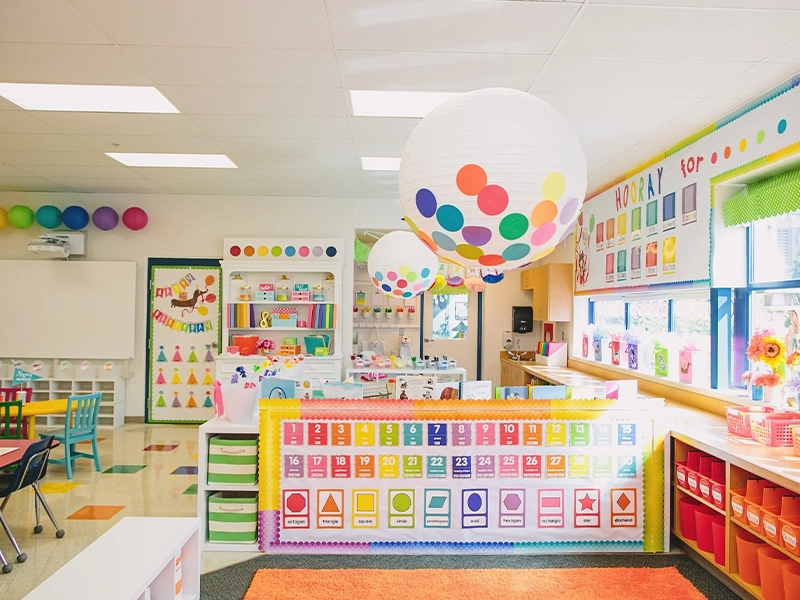
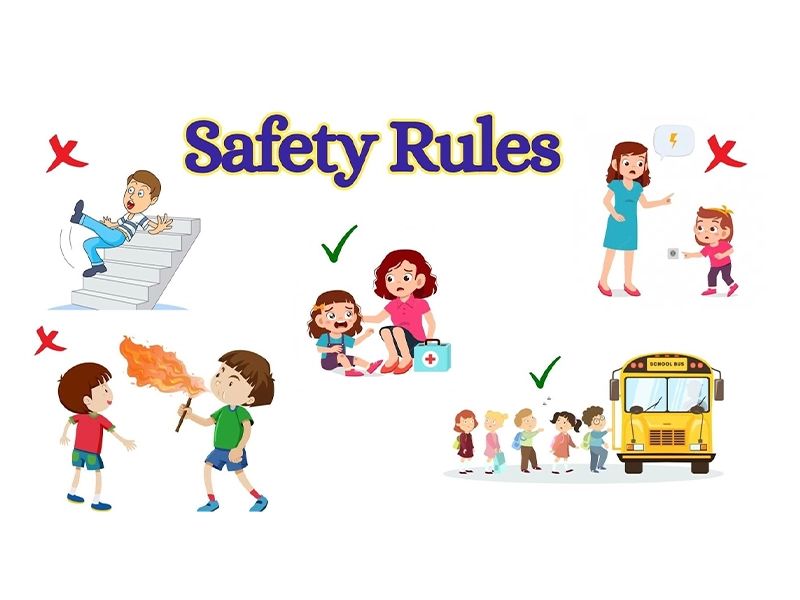
3. Careful Consideration of Safety Issues
Safety is the most essential thing in any kindergarten classroom. Make sure all furniture and materials are safe for young children. This means using furniture with rounded edges, securing shelves to walls, and keeping dangerous items out of reach. Clear pathways and exits are also essential to prevent accidents. Regular safety checks help keep the classroom safe. Childproof locks on cabinets and covers on electrical outlets are simple but effective ways to ensure safety.
4. The Functional Partition Must Be Clear
Organizing the classroom into different areas helps children understand where to do various activities. Have clear zones for reading, art, play, and other activities. This makes the classroom more functional and easier to manage. For example, a reading nook can have a small bookshelf and comfy chairs, while an art corner can have tables, easels, and art supplies. Using rugs or wall dividers can help define these areas. Labeling storage bins and shelves in each location makes it easy for children to find and put away materials.
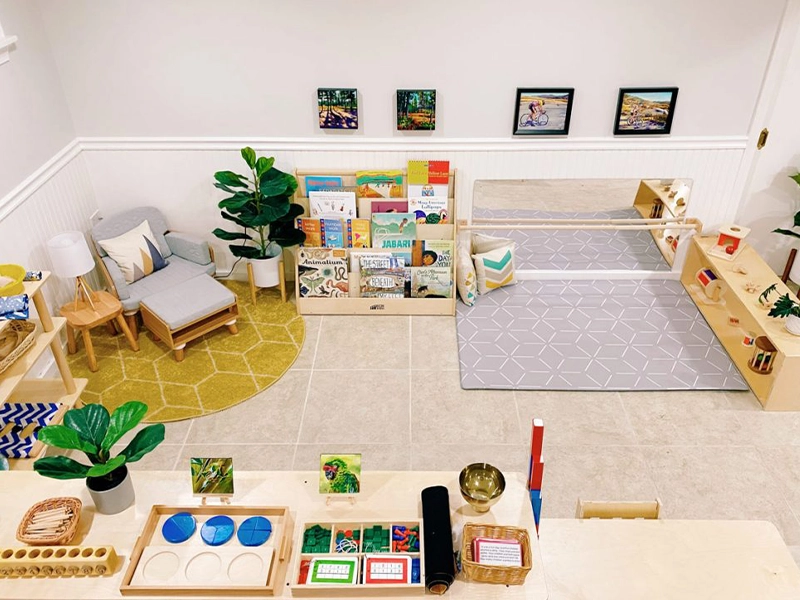
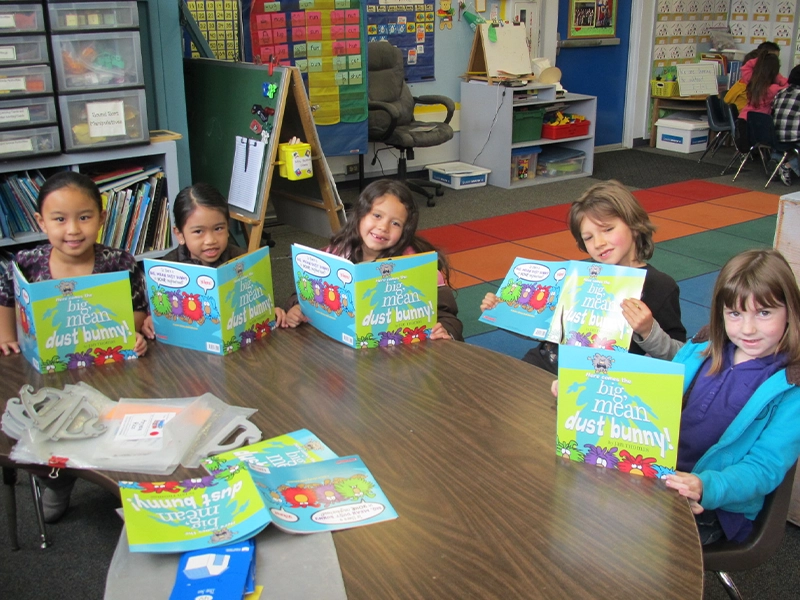
5. Space for Small Group Lessons
Creating spaces for small group lessons is essential for personalized learning. Small group areas can be used for focused instruction, collaborative projects, and peer learning. These spaces should have comfortable seating and tables that make group work easy. A dedicated area for small groups allows teachers to give targeted support and engage students in meaningful discussions. It also encourages social interaction and teamwork. Flexible seating options like movable chairs or cushions can make these areas adaptable to different group sizes and activities.
6. Kindergarten Bulletin Boards
Bulletin boards display student work and essential information and enhance classroom decor. They can highlight themes, celebrate achievements, and communicate with parents. Creative bulletin boards make the classroom more vibrant and interactive. Change the displays regularly to keep the content fresh and relevant. Use colorful borders, interesting backgrounds, and engaging visuals to make bulletin boards more appealing to children. Interactive bulletin boards with activities like word walls or question boards can keep students engaged outside of structured lessons.
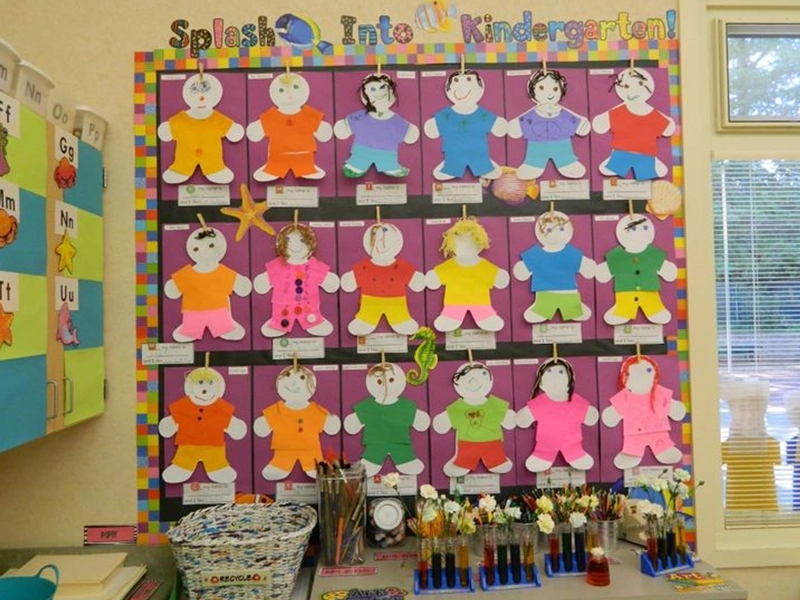
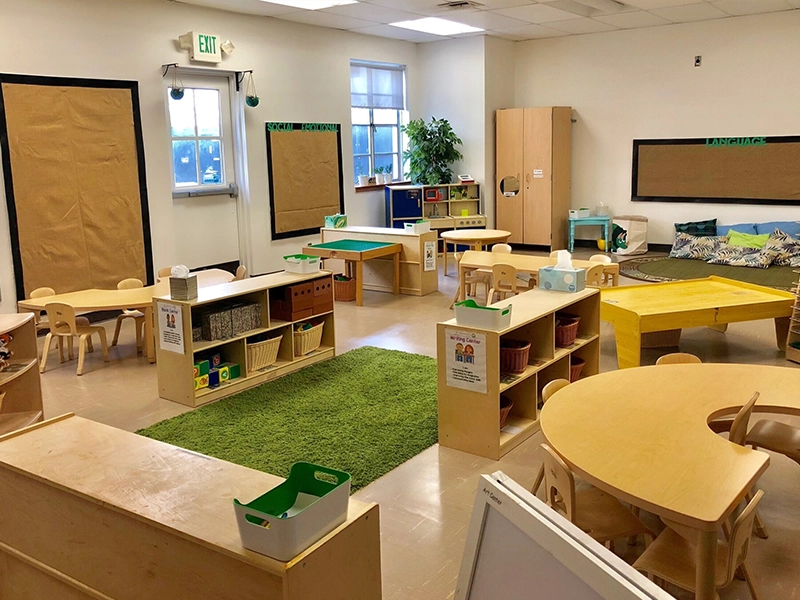
7. Making the Best Use of Classroom Space
Using classroom space wisely is critical to creating an effective learning environment. Arrange furniture to optimize flow, use vertical space for storage, and keep the floor open for activities. Multi-functional furniture like storage benches and foldable tables can save space and add versatility. Efficient use of space ensures the classroom isn’t cluttered and that there’s enough room for activities, from circle time to group projects. Wall-mounted storage and shelves can help free up floor space, making the classroom feel more extensive and more open.
8. Funky Furniture
Using funky, child-friendly furniture can make the classroom more fun and inviting. Unique pieces like bean bags, colorful chairs, and themed tables add character to the space. Choose furniture that is comfortable, durable, and suitable for young children. Funky furniture creates a playful atmosphere that encourages children to enjoy their time in the classroom and engage more in learning activities. Consider seating options that allow for movement, like wobble stools or floor cushions, which can help restless children stay focused.
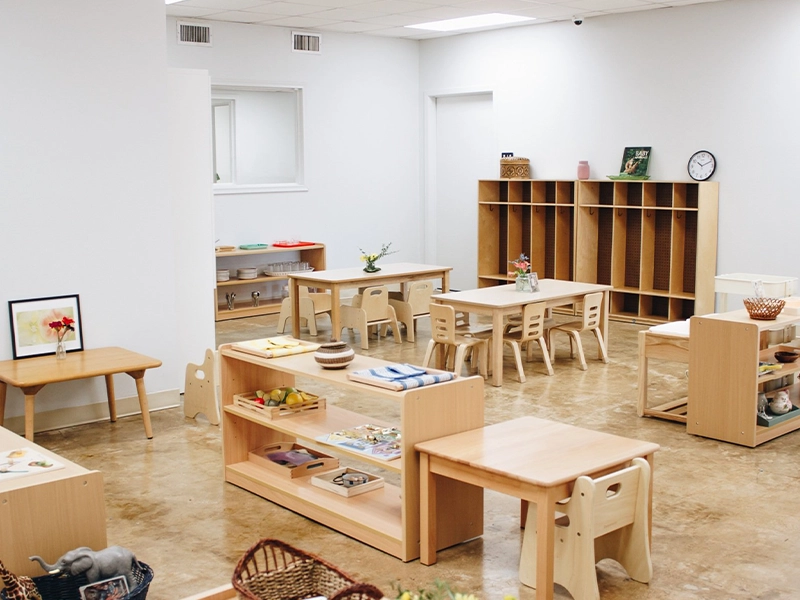
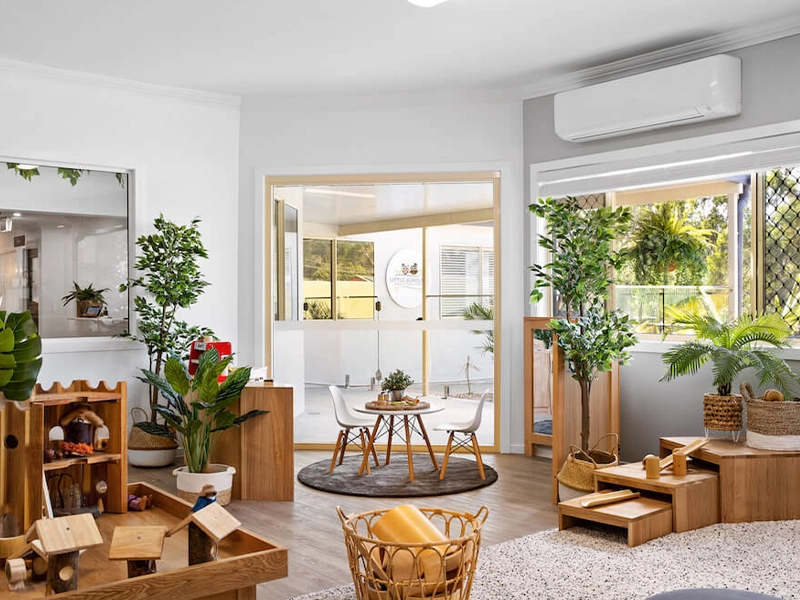
9. Create an Environment by Nature
Bringing nature into the classroom has many benefits for children. Natural elements like plants, natural light, and nature-themed decor can create a calming and refreshing environment. Nature-based classrooms help reduce stress, improve concentration, and promote well-being. Indoor plants, nature posters, and natural materials like wood and stone can create a nature-inspired classroom. Outdoor learning spaces like gardens or nature trails enhance the learning experience. Nature-themed activities like planting seeds or observing insects provide hands-on learning opportunities.
10. Hanging Decorations Created by Children
Displaying children’s artwork and crafts as decorations makes the classroom feel more personal and engaging. Hanging decorations created by students give them a sense of ownership and pride in their environment. It also encourages creativity and self-expression. Use strings, clips, or bulletin boards to display their work prominently. Regularly updating the displays with new projects keeps the decor dynamic and reflects the ongoing creativity of the students. Involving children in changing and arranging the displays can foster responsibility and teamwork.

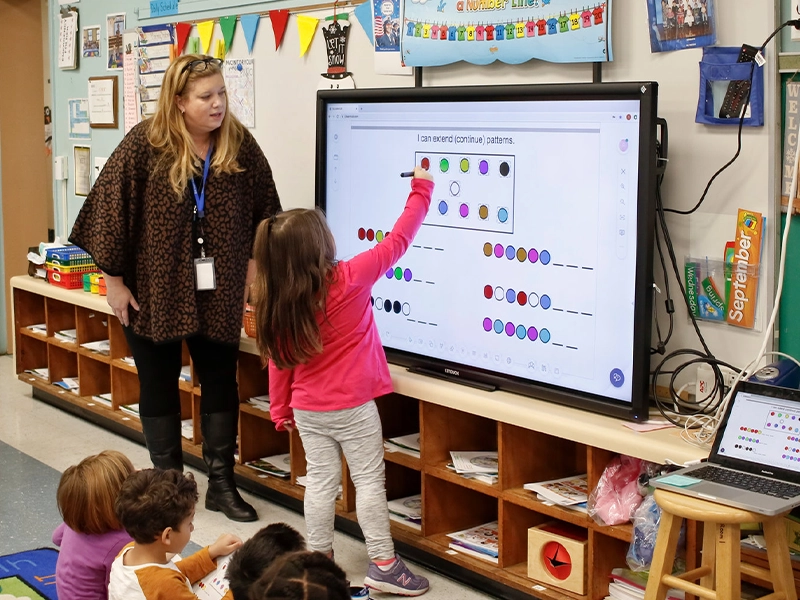
11. Incorporating Technology
Incorporating technology into the kindergarten classroom can enhance learning and engagement. Age-appropriate tech tools like tablets, interactive whiteboards, and educational apps support various learning activities. Technology makes lessons more interactive, provides access to many resources, and caters to different learning styles. Balance tech use with traditional hands-on activities to ensure well-rounded development. Providing guidelines and supervision helps children use technology effectively and safely. Using technology to connect with other classrooms or experts can broaden students’ learning experiences.
12. Post Those Rules!
Posting classroom rules helps set expectations and create a structured learning environment. Rules should be simple, positive, and easy for young children to understand. Visual aids like pictures or icons make the rules more accessible. Consistently reinforcing the rules helps children understand the importance of following them. A visible reminder of the regulations promotes order and discipline in the classroom. Involving students in creating the rules can increase their understanding and commitment to following them.
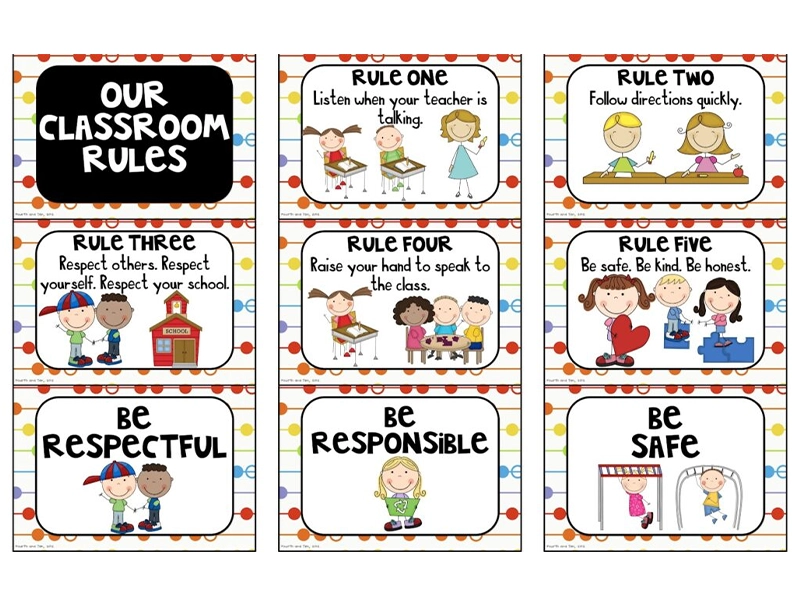

13. Classroom Schedule
A clear and consistent classroom schedule helps children understand the daily routine and what to expect. Visual schedules with pictures and icons make it easier for young children to follow. A structured schedule provides a sense of security and helps manage time effectively. It allows for balanced activities, including learning, play, and rest. Consistent routines support better behavior and help children develop time-management skills. Displaying the schedule prominently and referring to it throughout the day reinforces the routine and ensures smooth transitions between activities.
How Can You Create a Welcoming Atmosphere in Your Kindergarten Classroom?
Creating a welcoming atmosphere in your kindergarten classroom is essential for fostering a sense of belonging and comfort among young learners. To achieve this, consider incorporating various kindergarten classroom ideas that focus on personalization, comfort, and inclusivity. Start by decorating the entrance with colorful welcome signs and banners that greet each child by name. This small gesture can make a big difference in helping children feel recognized and valued when they enter the classroom.
Use soft lighting and cozy corners in the classroom to create a home-like environment. Comfortable seating areas with pillows, rugs, and bean bags can make the space inviting and warm. These areas can serve as reading nooks or quiet zones where children can relax and enjoy some downtime. Additionally, displaying children’s artwork and projects on the walls can give them a sense of ownership and pride in their classroom. Regularly update these displays to keep the environment dynamic and reflect their creativity.
Incorporate interactive elements such as bulletin boards that showcase essential information, class rules, and student achievements. These boards can be decorated with bright colors and engaging visuals to attract children’s attention. Including interactive components like weather charts, attendance check-ins, or a “helper of the day” board can make daily routines more engaging and foster community.
Involving children in the classroom setup and decision-making process can also enhance the welcoming atmosphere. Allow them to choose themes for different areas or vote on classroom decorations. This involvement makes them feel included and teaches them about teamwork and responsibility. Additionally, consider incorporating multicultural elements into the classroom decor and curriculum to celebrate diversity and ensure that every child feels represented and respected.
How Can You Make Your Kindergarten Classroom More Functional and Flexible?
Making a kindergarten classroom functional and flexible requires thoughtful planning and incorporating versatile kindergarten classroom ideas. Start by organizing the space into distinct zones for different activities, such as reading, art, science, and play. Clearly defined areas help children understand the purpose of each space and make transitions between activities smoother. Use rugs, shelves, or partitions to visually and physically separate these zones, ensuring that each area is equipped with the necessary materials and tools.
Flexible seating arrangements are crucial to creating a versatile learning environment. Incorporate a variety of seating options like floor cushions, bean bags, standing desks, and traditional chairs. Allow children to choose their preferred seating based on the activity and comfort. This flexibility can enhance focus and engagement, catering to different learning styles and needs.
To maximize space, use modular and multi-functional furniture that can be rearranged or repurposed. Stackable chairs, foldable tables, and movable storage units can be quickly adjusted to accommodate group work, individual tasks, or circle time. This adaptability ensures that the classroom can meet the changing needs of students and teachers throughout the day.
Practical storage solutions are essential for maintaining an organized and clutter-free classroom. Use labeled bins, cubbies, and shelves to keep materials accessible and neatly stored. Ensure that storage solutions are child-friendly, allowing students to find and put away items independently. This organization keeps the classroom tidy and fosters a sense of responsibility and independence among students.
Incorporating technology can further enhance the functionality of the classroom. Use interactive whiteboards, tablets, and educational apps to support various learning activities. However, balancing tech use with hands-on experiences ensures a well-rounded approach to education. Provide guidelines and supervision to help children use technology safely and effectively.
Lastly, consider the benefits of outdoor learning spaces. Utilizing outdoor areas for lessons and activities can provide a refreshing change of scenery and promote physical health. Outdoor classrooms, gardens, or nature trails can be used for science experiments, physical education, or simply enjoying storytime in a natural setting. This connection with nature can reduce stress and enhance cognitive development.
By implementing these strategies, you can create a kindergarten classroom that is both welcoming and functional, supporting a dynamic and effective learning environment for all students.
Transforming your kindergarten classroom with these 13 inspiring ideas can create a dynamic and nurturing environment that supports learning and development. You ensure the space is engaging and practical by focusing on color coordination, cohesive themes, safety, functional partitions, and flexible seating. Incorporating personalized touches, interactive bulletin boards, and various storage solutions can make your classroom more welcoming and organized.
Adding elements like nature, technology, and outdoor learning spaces further enriches the educational experience, catering to diverse learning styles and promoting well-rounded development. Regularly updating and adjusting your classroom layout based on the evolving needs of your students ensures it remains a vibrant and compelling learning environment.
These kindergarten classroom ideas make the space more functional and flexible and foster a sense of belonging, creativity, and enthusiasm for learning. By implementing these strategies, you can transform your classroom into a place where young learners thrive and feel excited to explore and grow daily.

